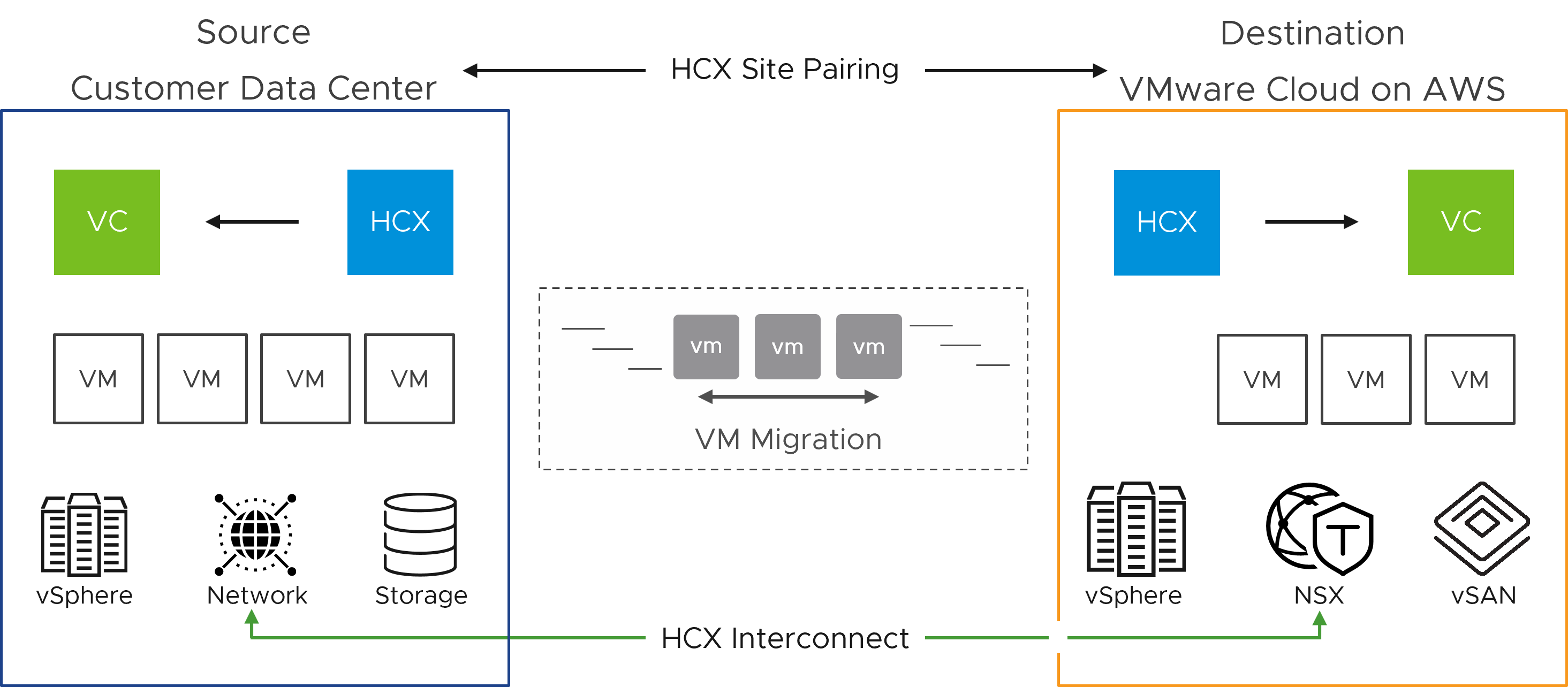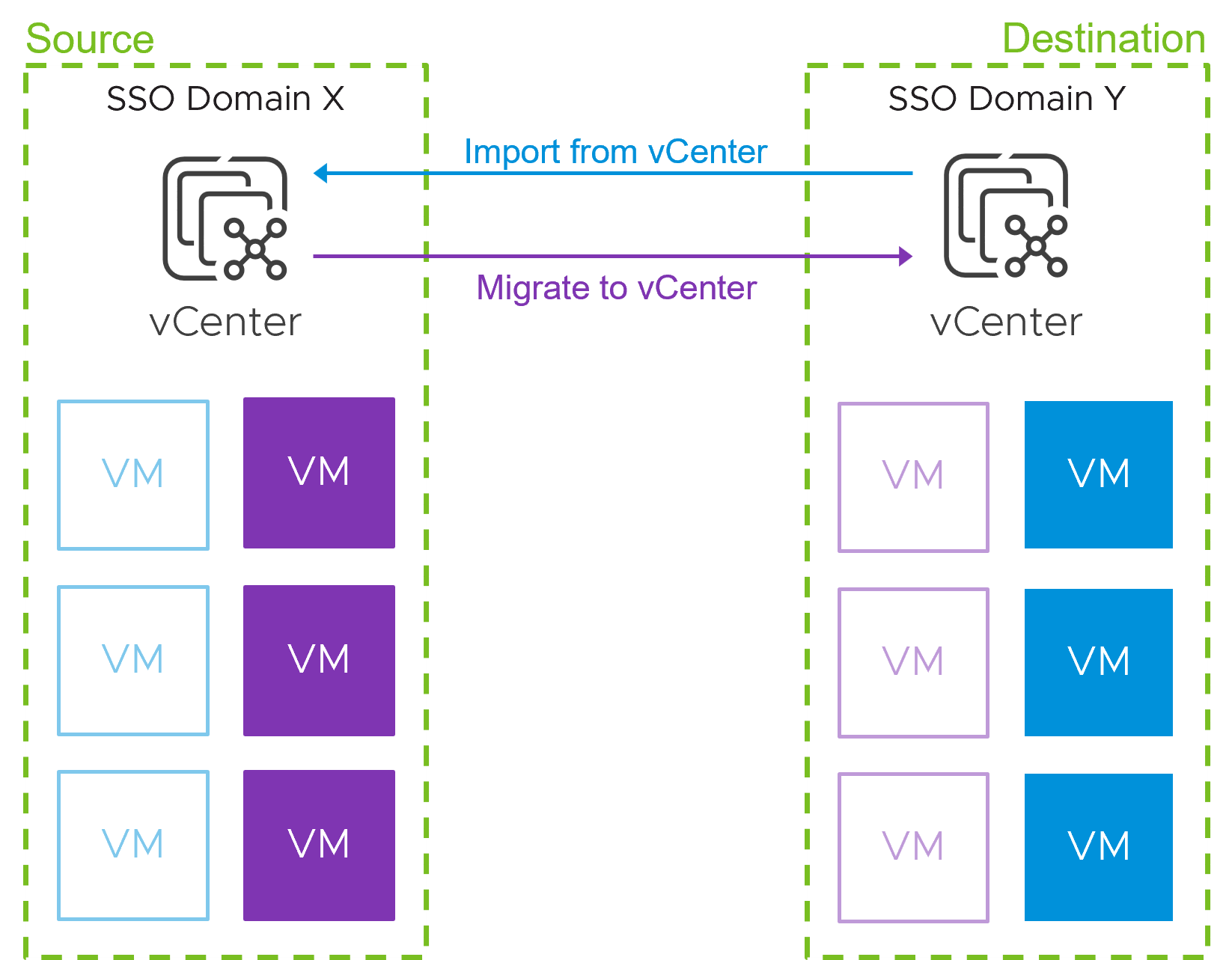With migration wave and events in mind, we can take advantage of several VMware based tools.
VMware Content Libraries
VMware vSphere Replication(embedded in SRM, HCX)
VMware HCX
VMware Cross vCenter vMotion
API’s & PowerCLI
VMware Content Libraries
The Content Library service provides simple and effective management of OVF templates, ISO images, and scripts for vSphere administrators. The Content Library service lets you synchronize content across vCenter Server instances.
Content libraries are container objects for VM and vApp templates and other types of files, such as ISO images, text files, and so on. To deploy virtual machines and vApps in the vSphere inventory, you can use the templates in the library. You can also use content libraries to share content across vCenter Server instances in the same or different locations. Sharing templates and files results in consistency, compliance, efficiency, and automation in deploying workloads at scale.
By using Content Libraries, organizations can use vCenter to subscribe to their existing Content Libraries to move content up into a VMware Cloud platform without using third party tools or software.
VMware vSphere Replication
VMware vSphere Replication is an extension to VMware vCenter Server that provides a hypervisor-based virtual machine replication and recovery. It is also a part of VMware Site Recovery Manager, VMware Site Recovery Service, and VMware HCX.
vSphere Replication is an alternative to storage-based replication. It protects virtual machines from partial or complete site failures by replicating the virtual machines between the following sites:
From a source site to a target site
Within a single site from one cluster to another
From multiple source sites to a shared remote target site
Another automated and supported method of moving VMware based workloads up to the cloud is by using vSphere Replication between vCenters on premise and in the cloud. This method is well understood and used by many organizations today. It is included in existing VMware vCenter licensing, VMware Site Recovery Manager, VMware Site Recovery Service, and VMware HCX.
VMware HCX
VMware HCX™ is an application mobility platform designed for simplifying application migration, workload rebalancing and business continuity across data centers and clouds.
The HCX platform provides a hybrid interconnect to enable simple, secure and scalable application migration and mobility within and across data centers and clouds.
VMware HCX abstracts vSphere-based on-premises and cloud resources and presents them to the applications as one continuous resource. At the core of this is a secure, encrypted, high throughput, WAN optimized, load balanced, traffic-engineered hybrid interconnect that automates the creation of a network extension. This allows support for hybrid services, such as application mobility, on top of it. With HCX hybrid interconnect in place, applications can reside anywhere, independent of the hardware and software underneath.
The following figure illustrates the conceptual design for the HCX solution between two sites.

HCX Migration Types
Virtual Machines can be moved to and from VMware HCX-enabled data centers using multiple migration technologies. The migration type depends largely on the use-case, number and size of migrated virtual machines, and network bandwidth. The migration type is also restricted by the HCX license available.
The following sections describe the available migration options.
VMware HCX Bulk Migration
This migration method uses the VMware vSphere Replication protocols to move the virtual machines to a destination site.
The Bulk migration option is designed for moving virtual machines in parallel.
This migration type can set to complete on a pre-defined schedule.
The virtual machine runs at the source site until the failover begins. The service interruption with the bulk migration is equivalent to a reboot.
For the most up-to-date list of requirements and restrictions when using HCX Bulk Migration, please refer to the Understanding VMware HCX Bulk Migration section in the VMware HCX online documentation.
VMware HCX vMotion
This migration method uses the VMware vMotion protocol to move a virtual machine to a remote site.
The vMotion migration option is designed for moving single virtual machine at a time.
VM is migrated while powered on. There is no service interruption during the VMware HCX vMotion migration.
The vm data is encrypted by HCX.
For the most up-to-date list of requirements and restrictions when using HCX vMotion, please refer to the Understanding VMware HCX vMotion and Cold Migration section in the VMware HCX online documentation.
VMware HCX Cold Migration
This migration method uses the VMware NFC protocol. It is automatically selected when the source virtual machine is powered off.
For the most up-to-date list of requirements and restrictions when using HCX Cold Migration, please refer to the Understanding VMware HCX vMotion and Cold Migration section in the VMware HCX online documentation.
VMware HCX Replication Assisted vMotion
VMware HCX Replication Assisted vMotion (RAV) combines advantages from VMware HCX Bulk Migration (parallel operations, resiliency, and scheduling) with VMware HCX vMotion (zero downtime virtual machine state migration).
For the most up-to-date list of requirements and restrictions when using HCX Replication Assisted vMotion, please refer to the Understanding VMware HCX Replication Assisted vMotion section in the VMware HCX online documentation.
VMware HCX OS Assisted Migration
This migration method provides for the bulk migration of guest (non-vSphere) virtual machines using OS Assisted Migration to VMware vSphere on-premises or cloud-based data centers.
For the most up-to-date list of requirements and restrictions when using HCX OS Assisted Migration, please refer to the Understanding VMware HCX OS Assisted Migration section in the VMware HCX online documentation.
TYPE |
DOWNTIME |
NO DOWNTIME |
MIN DOWNTIME |
CONVERSION DOWNTIME |
SUMMARY |
|---|---|---|---|---|---|
COLD MIGRATION |
✓ |
|
|||
HCX vMotion |
✓ |
|
|||
Bulk Migration |
✓ |
|
|||
Replication Assisted vMotion |
✓ |
|
|||
OS Assisted Migration |
✓ |
|
VMware Advanced Cross vCenter vMotion
The Advanced Cross vCenter Server vMotion (XVM) helps to migrate virtual workloads between vCenter Server instances, without the requirement for Enhanced Linked Mode (ELM) or Hybrid Linked Mode (HLM). This means it’s possible to migrate virtual machines (VMs) between vCenter Servers that are in different Single Sign-On (SSO) domains. The XVM capability is embedded into the vSphere Client with the vSphere 7 Update 1c release.

From within the vSphere Client, two workflows are available to migrate workloads between vCenter Servers. Either using the ‘import VMs’ option in the Hosts and Cluster view to import VMs from a target vCenter Server Appliance (VCSA), or by selecting VMs and opting for ‘Migrate’ in the menu.
For detailed information, visit Advanced Cross vCenter Server vMotion Capability .